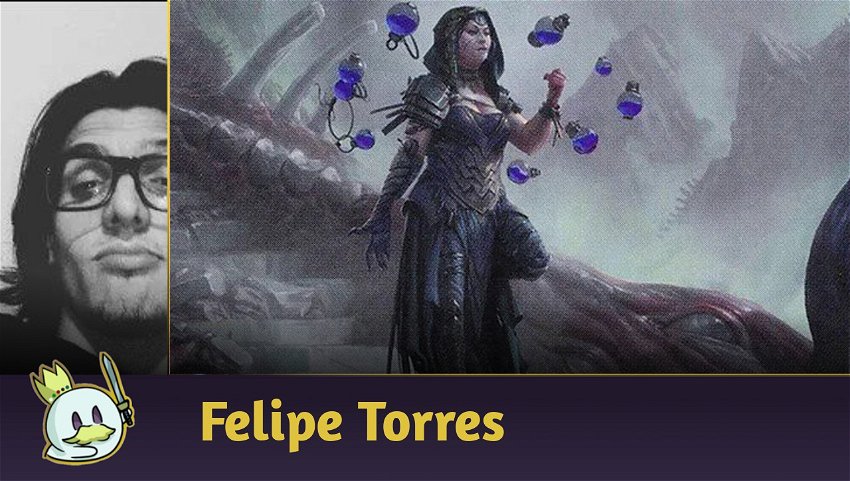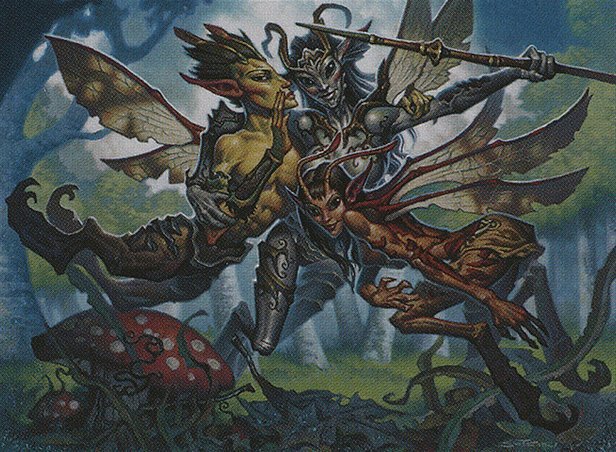Introduction and the Reserved List
This article features an optimized Kess, Dissident Mage Decklist, but without using cards from the reserved list.
The reserved list contains cards that Wizards of the Coast promised they would not release in any new products, to maintain their collectible aspect. This led to a rise in the prices of these cards, as the supply doesn't increase while the demand is always rising.
The rise in the prices of these cards has become a barrier to entry for cEDH, making it impossible to build a 100% optimized deck that has more than one color, without spending more than the value of a car. For this reason, this article series will focus on building optimized decks without using cards from the reserved list.
The Decklist — Kess, Dissident Mage
This list was created by the person who writes you and fits the Midrange archetype, having tools to stay relevant in the late game and generating value. That is, it is a deck that can be faster or slower, depending on the table it is on.

Undoubtedly, Kess is one of the most beloved commanders in the cEDH. With its recursion potential, being able to reuse spells from your graveyard, it gives you a new hand and allows you to make the most used wincon even stronger.
It is still possible to use tutors a second time, thus turning mana and graveyard cards into your second hand.
Winconditions
This deck has two different combo lines, which are Thassa Consult and Breach Station.
Thassa Consult
Combo Condition: Thassa's Oracle and Demonic Consultation/Tainted Pact in hand, and enough mana to cast them.
1 — Cast Thassa's Oracle.
2 — Answer her ETB by casting the other spell from your hand, naming a card you don't have in your library, or exiling until the last card.
At Thassa's Oracle ETB resolution, you win the game.
Breach Station
Condition for the combo: Underworld Breach and Grinding Station one mana rocks from the separate ones below. At least 3 cards in the graveyard.

All of the above mana rocks generate enough mana to be cast and tapped repeatedly.
1 — Tap the chosen mana rock to generate mana.
2 — Sacrifice the mana rock using the Grinding Station and milling 3 cards from your own library.
3 — Cast the mana rock for the escape cost, exiling 3 cards, putting it onto the battlefield, and untapping Grinding Station.
It is possible, in the middle of the combo, if you already have a good storm counter or a lot of mana, use a Brain Freeze to crush a good amount of cards and have more options, instead of being forced to always exile what you shredded to keep the loop.
Repeat the process until you have no cards in your deck, switching the mana stone to one that generates colored mana, then cast Thassa's Oracle and win the game.
Deck Package Analysis
To facilitate the explanation, I separated the cards into different packages, having different sizes, and which were defined according to the deck's needs.
As some cards fit in more than one package, I'll talk about them below. The packages are: Ramps, Tutors, Card Advantage and Interactions.
Ramps

Just like any other deck in Grixis colors, this one has the standard pack of rocks, not including Grim Monolith and Mox Diamond because they belong to the reserved list.
An interesting thing about using rituals on Kess is precisely that, if you do a Dark Ritual to speed up the commander, you can reuse it from the grave to make a spell after that. So, with Kess, rituals can be cast from the grave, being even better than if cast from the hand, as they don't spend cards from the hand to generate mana.
Dockside Extortionist, in addition to ramping you up as it usually does, brings with it numerous cards to abuse the excess of artifacts and enchantments present in the metagame. It can be revived with Reanimate or bounces like Alchemist's Retrieval, which allows you to recast it when needed, and Snap, which virtually costs 0 and even allows you to return Ddorkside, as well as generating even more treasures by casting it.
Tutors

Tutors are the foundation of a deck's consistency, along with a good density of working copies, so you can get the card you need for a situation.
We use black in the deck, which helps a lot with one or two mana tutors like Vampiric Tutor and Demonic Tutor, in addition to Wishclaw Talisman.
It is very important to note that even though red is not the color of tutors, it gives us a great one mana tutor, Gamble, the red Entomb. It's an optimized tutor good enough to be included in the list, mainly because of its reduced cost — and in a Kess, discarding a card isn't that bad.
To get to the main deck's combo, you don't need Thassa. If you have Pact or Demonic Consultation, you can use it to find Thassa and then exile Consultation from the graveyard to win. Or, if you have a Demonic Tutor, you can get Demonic Consultation, exile from the grave, and find Thassa.
Without using the reserved list (or unaffordable cards), you lose Intuition and Imperial Seal, and even though the latter is a one mana tutor, Intuition is the most needed card in the deck, as it is an instant -speed 3 mana tutor that gives you one card for your hand and two you could cast from the graveyard. The recursion provided by the commander is insane if paired with this card.
Card Draw

In addition to Kess, which is not exactly a draw tool, but allows you to have serious cards to draw, this list has other tools to guarantee you additional cards every turn, such as Necropotence, which is falling into disuse, but it's still a very efficient card.
We also have Ragavan, Nimble Pilferer, which steals cards from the top of an opponent's deck, and that good old set present in basically every deck that can use them: Rhystic Study, Mystic Remora.
In addition to these, the list also runs Necropotence and Ledger Shredder, a new addition to the list for their ability to filter cards and help sculpt an ideal winning hand.
Windfall, Wheel of Misfortune and Valakut Awakening // Valakut Stoneforge are simple ways for you to draw many cards after using everything important in your hand and still using something that was in your old hand, with Kess, and Ad Nauseam is excellent to have access to a massive number of cards, even if losing life for it.
Interactions

The deck didn't miss many interactions by not using the reserved list. The main one was Gilded Drake, which doesn't make that much of a difference.
We have all the standard counterspells to meet on a cEDH deck. Free counters, optimized removals, ways to stop an opponent even if they resolve a spell. We have everything, or almost everything, a deck needs to interact with its opponents — and most of it can still be used twice at the Commander's expense.
Decklist With Reserved List
Cards from the Reserved List (or unaffordable) that didn't make it:

Cards that have been replaced to replace them:

Do Old Duals make a difference in the deck? Yes, they are lands that will enter untapped, and they don't cost you 2 life to do so. However, their price is too prohibitive for this to be relevant enough.
Rocks make a bigger difference in the deck, precisely by exchanging a positive rock for a signet, and exchanging a Mox that always generates colored mana for one that depends on the number of artifacts.
Wheel of Fortune is intrinsically better than the card that was put in its place because it doesn't have a chance to damage you, and you can't discard your hand and draw.
Lion's Eye Diamond is one of the cards that makes the most difference between the lists because it's part of one of the deck's wincons. The Grinding Station that came into place works like a wincon, but it's not as efficient and strong as LED.
Instead of Intuition I chose Necropotence because it costs the same amount of mana, and because it draws tons of cards to guarantee what you need.
I didn't replace Gilded Drake with a similar card. I chose to include a way to return Grinding Station from the graveyard to the battlefield with Goblin Welder.
The last change to the list was that instead of Imperial Seal, I used Praetor's Grasp, which isn't as efficient, but can disable the opponent's wincon while still giving you information about what's in their deck or hand.
Strengths & Weaknesses
Strengths
— Extremely adaptive deck, being able to respond and deal with different types of tables.
— It is possible to cast Kess at 1, or any card advantage engine.
— Can handle opponents well while trying to win.
Weaknesses
— The deck is not as fast as the farms.
— At tables where your game plan will be faster, Kess loses some utility.
Conclusion
That's all for today, stay tuned as we will soon have another cEDH deck guide with interesting restrictions!















— Comentarios 0
, Reacciones 1
Se el primero en comentar